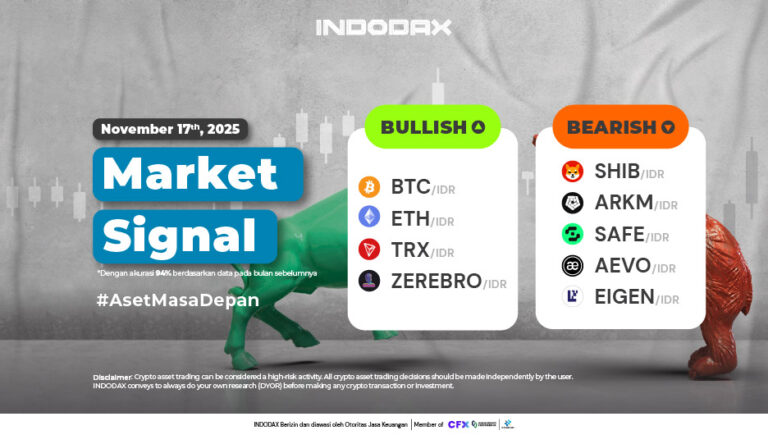The monetary system is an important component of the economic structure that determines financial stability at the national and international levels.
As a system in charge of regulating currency circulation, interest rates, and exchange rate fluctuations, it plays a key role in maintaining economic balance.
In this article, we will discuss the definition of the monetary system, its role in the economy, and the evolution of the global monetary system to date.
What is Monetary System?

A monetary system is a system that regulates the use and circulation of currency in a country or region, which includes policies on exchange rates, inflation, and interest rates.
More broadly, it is a form of overall management and regulation of the country’s finances, including standards for the value of money and provisions regarding the characteristics and nature of the currency.
The monetary system is responsible for controlling the amount of money circulating in the economy to maintain price stability and support healthy economic growth.
This system plays an important role in controlling inflation because if it is not controlled, the value of the currency can fall, prices can rise, and economic stability can be disrupted.
In addition, the monetary system also includes oversight of the country’s foreign exchange reserves, the value of foreign exchange, and various other components related to state finances.
This important role is generally carried out by the central bank, which is tasked with regulating the money supply and maintaining overall economic balance.
Another interesting article for you: What is a Mixed Economic System? Advantages, Disadvantages & Examples
Main Functions of the Monetary System
The monetary system performs a number of vital functions in maintaining a country’s economic balance. Here are some of its functions:
1. Regulating the Exchange Rate
One of the important roles of the monetary system is to manage the exchange rate of currencies in international trade relations.
With proper regulation, this system helps maintain the stability of the exchange rate so that it is not too volatile so that export-import activities continue to run smoothly and do not burden business actors or consumers.
2. Maintaining Economic Stability
The monetary system plays a role in controlling inflation and preventing deflation by using tools such as interest rates and open market operations.
Controlling inflation keeps people’s purchasing power stable, while preventing deflation helps ensure that economic growth does not slow down drastically. Thus, national economic stability is maintained.
3. Supporting State Budget Policy
By regulating the amount of money in circulation and its influence on borrowing costs, the monetary system provides space for the government to adjust state spending and revenue policies.
This allows the implementation of development programs to run more effectively, while supporting the achievement of sustainable economic growth targets.
History and Development of the International Monetary System
The history of the international monetary system records several major changes in the management of global currencies.
Initially, the gold standard system was implemented starting in 1870, with England as the pioneer. In this system, the value of a currency is determined based on the amount of gold owned by a country.
This system was successfully implemented in many countries because it provided stability in international trade.
However, with the outbreak of World War I, this system began to falter. Inflation and political instability in Europe reduced confidence in currencies pegged to gold, and eventually failed to be maintained after the Great Depression.
In 1944, the Bretton Woods system was introduced as a post-war solution. In this system, world currency exchange rates were linked to the US dollar, which remained pegged to gold.
Two important international institutions, namely the World Bank and the IMF, were formed to support the global economy.
However, in 1971, this system ended after President Nixon announced the termination of the convertibility of the US dollar to gold.
Since 1973, the international monetary system has shifted to a fiat currency system, where the value of currencies is no longer tied to gold.
Two exchange rate systems are implemented, namely a fixed exchange rate, where the government sets the exchange rate, and a free floating exchange rate, which allows exchange rates to move according to market supply and demand.
This change marked a major development in the international monetary system, with more flexibility for countries to manage their economies.
Another interesting article for you: 10 Principles of Economics According to Gregory Mankiw: Examples & Characteristics
Monetary System and International Trade
The international monetary system plays an important role in trade between countries, because stable exchange rates allow trade to run smoothly.
Each country has a different currency, and to carry out international transactions, a system is needed that regulates the comparison of currency values ??between countries, known as the exchange rate or currency rate.
This system aims to maintain the balance of exchange rates and global economic stability. The international monetary system consists of structures, instruments, institutions, and agreements that regulate currency exchange rates around the world.
In addition, this system also manages capital flows, international trade, and the balance of payments between countries.
Its main purpose is to maintain international financial stability and prevent payment imbalances that can disrupt the global economy.
This system has evolved over time, adapting to economic instability that occurs in various periods.
These changes encourage the international monetary system to continue to adapt appropriate policies and regulations in order to support trade efficiency and world financial stability.
Another interesting article for you: What is a Financing Institution? Let’s Understand It Deeply
Challenges in the Modern Monetary System

The modern monetary system continues to evolve along with changing economic conditions and technological advances.
In the midst of an increasingly connected world, the monetary system now faces new challenges that require adjustment and innovation in order to maintain global financial stability.
The following are some of the main challenges faced by the current monetary system that you need to know:
1. Globalization and Economic Integration
With the rapid development of global trade, countries are now increasingly connected and dependent on each other in conducting economic transactions.
This requires the monetary system to be more flexible and responsive to market changes.
Countries must be able to manage the various currencies used in international trade, as well as adjust their domestic economic policies to remain stable in the face of changes in exchange rates.
Exchange rate instability or imbalances in the international balance of payments can affect the global economy and create tensions between countries involved in trade.
2. Technology and Cryptocurrency
The emergence of cryptocurrencies, such as Bitcoin and Ethereum, has presented a new alternative to the traditional monetary system based on fiat currencies and central bank policies.
Cryptocurrencies offer a decentralized financial system that does not rely on a central authority, which could change the way transactions are conducted globally.
While they offer the potential to increase efficiency and reduce transaction costs, the use of digital currencies also brings new challenges for countries in regulating and overseeing the circulation of digital currencies.
Countries must consider how to respond to the positive and negative impacts of cryptocurrencies, both as an investment tool and as a payment instrument.
This also needs to be considered in the context of their impact on monetary policy and economic stability.
Conclusion
Well, that was an interesting discussion about the Monetary System: Definition and Its Role in the Economy that you can read in full at the Crypto Academy at INDODAX Academy.
In conclusion, the monetary system plays an important role in maintaining economic stability, both domestically and internationally.
By regulating exchange rates, inflation, and interest rates, this system functions to create a stable and sustainable economy.
And, not only does it add insight into the investment sector, here you can also find the latest crypto news about the world of blockchain and crypto.
In addition, find other up-to-date information packaged in the most complete collection of crypto articles from Indodax Academy. Don’t miss the opportunity to expand your knowledge in the world of investment and digital technology!
So you don’t miss the latest information about the crypto world, don’t forget to follow INDODAX’s social media here: Instagram, X, Youtube & Telegram.
FAQ
1.What is a monetary system?
A monetary system is a series of policies that regulate currency in the economy, including managing interest rates, exchange rates, and inflation.
2.What is the main function of the monetary system?
The main function of the monetary system is to maintain economic stability, regulate exchange rates, and support fiscal policy.
3.How has the international monetary system evolved?
The international monetary system has evolved from the gold standard to the Bretton Woods system, and now uses a fiat currency system that is not tied to physical commodities.
4.What affects currency exchange rates?
Currency exchange rates are influenced by a variety of factors, including monetary policy, a country’s economic conditions, and supply and demand in the global market.
5.What are the biggest challenges facing the monetary system today?
The biggest challenges are the impact of globalization and technology, such as cryptocurrencies, which can disrupt the traditional monetary system.





 Polkadot 8.79%
Polkadot 8.79%
 BNB 0.53%
BNB 0.53%
 Solana 4.77%
Solana 4.77%
 Ethereum 2.37%
Ethereum 2.37%
 Cardano 1.75%
Cardano 1.75%
 Polygon Ecosystem Token 2.10%
Polygon Ecosystem Token 2.10%
 Tron 2.85%
Tron 2.85%
 Market
Market


